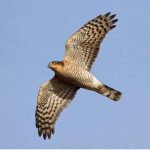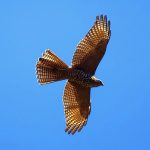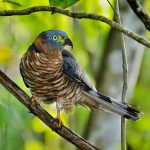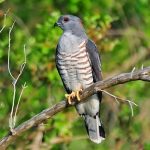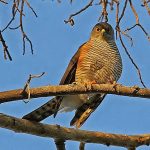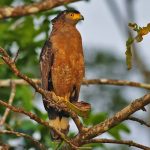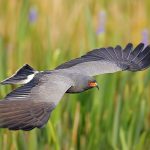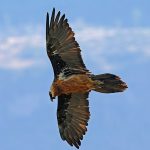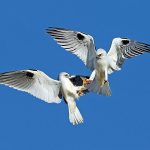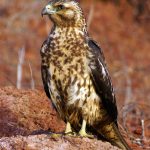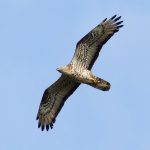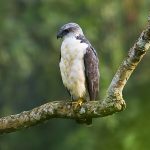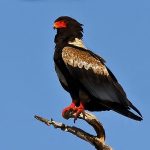Cooper's hawk
| Photo by Seth Cutright (A Hawk Counters World) |
Common name:
Cooper’s hawk (en); gavião-de-Cooper (pt); épervier de Cooper (fr); gavilán de Cooper (es); rundschwanzsperber (de)
Taxonomy:
Order Falconiformes
Family Accipitridae
Range:
This species is found breeding throughout the United States and southern Canada and winters in the southernmost parts of the United States, in Mexico and in Central America down to Costa Rica.
Size:
These birds are 37-45 cm long and have a wingspan of 62-90 cm. Males are smaller than females, weighing 220-410 g while females weigh 330-680 g.
Habitat:
They are mostly found in temperate forests and woodlands, but also in scrublands, tropical and sub-tropical forests, rural gardens and even within urban areas. They are found from sea level up to an altitude of 3.000 m.
Diet:
The Cooper’s hawk mainly hunts birds, such as starlings, doves, pigeons, robins, jays, flickers, quails, grouse, pheasants and chickens. They also take rodents, bats and occasionally reptiles and amphibians.
Breeding:
These birds breed in March-July. The nest is a pile of sticks lined with bark flakes and, sometimes, green twigs. It is placed in a large tree 8-16 m above the ground. The female lays 3-6 bluish to greenish-white eggs with darker spots, which she mostly incubates alone for 30-36 days while receiving food from the male. The chicks are fed by both parents and fledge 27-34 days after hatching, but continue to receive food from parents for another 2 months.
Conservation:
IUCN status – LC (Least Concern)
The Cooper’s hawk has a very large breeding range and, after the declines causes by pesticides and persecution until the 1970s, the population is now recovering at a rate of 37% per decade.
